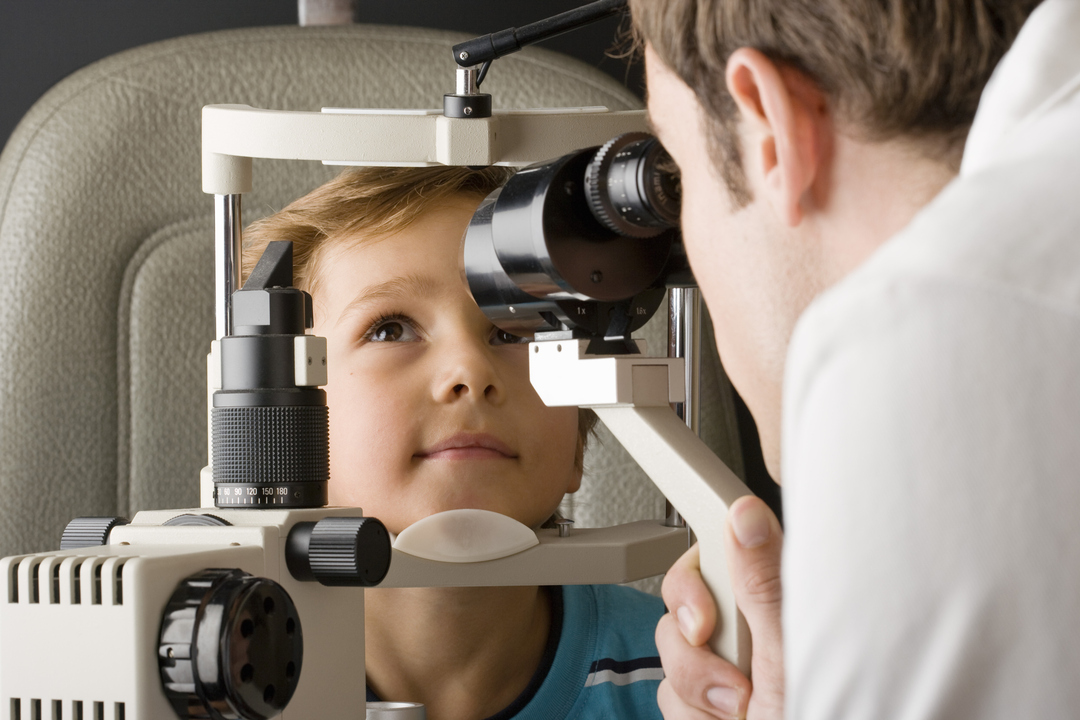Blefarite: sintomas, diagnóstico, tipos, tratamento
 Blepharitis is a group of diseases characterized by inflammation of the eyelids with damage to their outer edges.Usually blepharitis develops on both sides.The inflammatory process is accompanied by considerable discomfort.This pathology does not belong to the group of contagious, that is, infectious.
Blepharitis is a group of diseases characterized by inflammation of the eyelids with damage to their outer edges.Usually blepharitis develops on both sides.The inflammatory process is accompanied by considerable discomfort.This pathology does not belong to the group of contagious, that is, infectious.
For blepharitis is characterized by chronic course, although isolated as a chronic and acute form.In most cases, this disease does not cause significant visual impairment.Inflammation of the eyelids is more often observed in elderly patients, but cases of development of pathology are also frequent in people of other age groups, including children.
Table of contents: Classification Etiology and pathogenesis of blepharitis Symptoms of blepharitis Treatment of blepharitisClassification
 The following forms of the disease are distinguished according to etiology:
The following forms of the disease are distinguished according to etiology:
- allergic;
- Demodectic;
- blepharitis against a background of skin diseases( acne, rosacea, seborrhea);
- meibomia( with inflammation of the sebaceous glands of the eyelids).
Please note: so-called.Barley is an infectious inflammation of meibomies( modified sebaceous) glands of the eyelids.It can be confused with halyazion - a tumor-like formation that develops against the background of blockage of the duct of the sebaceous gland.Untreated barley can eventually transform into haljazion.
By localization, blepharitis can be:
- angular( with predominant lesion of the corners of the eyes);
- front edge( the process only affects the ciliated edge of the century);
- posterior marginal( inflammation spreads into the thickness of the eyelids, afflicting the meiMobile's glands).
Anterior marginal blepharitis, in turn, is subdivided in its etiology into seborrhoeic and staphylococcal.In some cases, a combination of these factors is noted.
Important : In case of posterior marginal blepharitis, a possible complication may be damage to the cornea and conjunctiva of the eye.
Etiology and pathogenesis of blepharitis

The cause of blepharitis development may be a viral or bacterial infection.Bacterial agent most often becomes golden, and in children - and epidermal staphylococcus.
Etiological factors also include:
- anemia( anemia);
- hypovitaminosis;
- chronic infections( foci in the nasopharynx or oral cavity);
- allergic diseases;
- irritation of mucous membranes( in case of dust);
- decreased overall immunity;
- pathology of the digestive system( chronic colitis, gastritis and cholecystitis);
- prolonged exposure to ultraviolet radiation( including after prolonged exposure to the sun).
Allergic blepharitis develops as a result of local hypersensitivity reactions when exposed to an allergen.

The cause of demodectic blepharitis is the penetration of microscopic ticks on the eyelashes.They are introduced into the ducts of the sweat and sebaceous glands of the eyelids, as well as into the follicles of the eyelashes.Many people belong to the carriers of this parasite, but clinical symptoms develop against the backdrop of exposure to unfavorable exogenous factors or a significant decrease in immunity.
One of the contributing factors to the appearance of inflammation of the eyelids is trichiasis, an abnormal growth of the eyelashes.
In rare cases, blepharitis is caused by pubic lice, which migrate to the eyelashes.
With meibomian blepharitis, the pathological process affects the altered sebaceous glands in the thickness of the century.The development of the disease is associated with an increased secretory function of the glands and the difficulty of removing the secret through the ducts.

An unfavorable ecological situation, in which smog and various chemical irritants appear in the air, is also an important etiological factor.
Important: one of the reasons for developing blepharitis can be a long stay in a smoke-filled room, because the products of tobacco combustion are strong irritants.
For the ulcerative form is characterized by purulent inflammation of the hair follicles of the eyelashes with the formation of ulcerative lesions along the edge of the eyelid.
 With scaly blepharitis, the thickening and hyperemia( marked reddening) of the eyelid edges develop, characteristic scales are formed, consisting of the desquamated epidermis and epithelium of the sebaceous glands.Scales firmly retained on the skin of the eyelids at the base of the eyelashes.When they are removed, a thin reddened skin is found, which is quickly covered with a crust of yellowish color.The scaly form is difficult to heal;The disease lasts for years and is accompanied by inflammation of the conjunctiva of the eyes and loss of eyelashes.
With scaly blepharitis, the thickening and hyperemia( marked reddening) of the eyelid edges develop, characteristic scales are formed, consisting of the desquamated epidermis and epithelium of the sebaceous glands.Scales firmly retained on the skin of the eyelids at the base of the eyelashes.When they are removed, a thin reddened skin is found, which is quickly covered with a crust of yellowish color.The scaly form is difficult to heal;The disease lasts for years and is accompanied by inflammation of the conjunctiva of the eyes and loss of eyelashes.
Against the backdrop of such a cutaneous pathology as rosacea, primary elements in the form of pustules and vesicles of grayish-red color form on the eyelid.

Symptoms of blepharitis
The leading symptoms of blepharitis are:
- itching and / or pain;
- sensation of foreign body;
- sensation of the "heaviness" of the eyelids;
- photophobia( photophobia);
- hyperemia of the eyelids;
- marked local swelling( often narrowing of the eye);
- dry eyes( or lacrimation);
- the accumulation of the eye-separated in the corners;
- appearance of crusts after a night's sleep.
Teleangiectasies are often observed - enlargement of small vessels, which manifest themselves in the form of meshes or asterisks on the skin.
Note: symptoms may not appear persistently;The periods of remission( improvement) often alternate with exacerbations.

Clinical manifestations of blepharitis often accompany the so-called.The "dry" eye syndrome, the development of which is caused by insufficient secretion of tear fluid.This pathology accounts for up to half of diagnosed cases of inflammation of the eyelids.
Treatment of blepharitis
How to treat blepharitis can only be determined by a doctor.First of all, it is important to identify the causes of the disease and determine the form of pathology.
Compresses and hygiene procedures
First of all, it is required to ensure the outflow of the gland secretions by cleaning their ducts.To do this, apply warming the glands with warm moist compresses.A positive effect can be achieved by repeating the procedure 3-4 times a day.Compress from a wet wipe or towel is applied for 5-10 minutes.
Careful hygiene of the edges of the eyelids is also necessary, presupposing them to be carefully cleared of crusts and dandruff.It is advisable to use a diluted shampoo for children.It is moistened with a clean cotton swab and clears the eyelids in the direction from the outer corner of the eye to the inner corner.A high level of hygiene is an indispensable component of successful treatment.Regular cleaning procedures many times reduce the risk of infection and the development of complications.
Medical treatment
The use of topical preparations with antibacterial effect is shown.The drugs of choice are eye drops with antibiotic gentamycin( 0.3%), erythromycin-based ointment( 0.5%) or tetracycline and 1% chloramphenicol liniment.
Drops are applied 3-6 times a day, depending on the severity of the course and severity of blepharitis symptoms, and ointment is applied to the affected eyelid 3-4 times during the day.
With scaly blepharitis, it may be recommended to treat the eyelids with a solution of brilliant green( usual "green") overnight for 1-2 weeks.
Important: blepharitis requires long term treatment.The drugs are used until the symptoms of inflammation completely stop, after which the treatment should last another month to avoid the development of relapses.
The following medicinal products are also widely used:
- Ofloxacin( drops);
- Ciprofloxacin( drops);
- Maxitrol( ointment containing polymyxin B and neomycin).
If there is a need for systemic antibiotic therapy( in particular - with abscessing, that is, the formation of ulcers) - shows oxacillin, as well as combinations of ampicillin with sulbactam and amoxicillin with clavulanic acid.
With prolonged blepharitis it is advisable to take tetracycline in tablets within 1-2 months.This antibiotic not only allows you to fight with pathogenic microflora, but also reduces the secretory activity of meibomian glands.
Local preparations containing corticosteroid compounds( Maxitrol, Dexa-gentamycin, Garazon) can only be used in short courses!

Important: against blepharitis does not exclude conjunctivitis, which requires appropriate treatment.
Non-steroidal anti-inflammatory drugs are indicated in the presence of symptoms of chronic non-bacterial blepharoconjunctivitis.Indocollar or Diclofenac is often prescribed.
In the treatment of scaly form, local application of sintomycin emulsion or fish oil is useful.
Treatment of allergic blepharitis requires the use of antihistamines( Opatanol, Lecrolin, etc.).
In case of demodex blepharitis, Invermectin is used to control mites.
Recommendations for patients suffering from inflammation of the eyelids
Women with blepharitis are advised to refrain from applying cosmetics( applying makeup) until they are completely cured.Chemical compounds, entering, for example, in mascara, can complicate the course of the disease.
You can wear contact lenses if there are no complications from the conjunctiva and corneal pathologies, and symptoms such as pain and itching are absent or slightly pronounced.Should be abandoned lenses, if the ophthalmologist prescribed ophthalmic ointment includes a component such as paraffin.
Complete recovery of blepharitis can not be achieved by far not always, but you can prevent the exacerbation by carefully following the rules of hygiene.
Blepharitis in children
 Blepharitis in children develops if the skin of the eyelids is thin, and the deeper tissues are loose and contain little fat.For a long time the disease can go unnoticed, so treatment is often started when the pathological process is already under way.
Blepharitis in children develops if the skin of the eyelids is thin, and the deeper tissues are loose and contain little fat.For a long time the disease can go unnoticed, so treatment is often started when the pathological process is already under way.
Causes of blepharitis in children
The most frequent cause of pathology is the active reproduction of S. aureus with a general weakening of the body.
Factors provoking the disease in a child are:
- hypothermia;
- decreased overall immunity;
- transferred infectious diseases;
- physical or neural surge;
- chronic diseases of the digestive system;
- diabetes mellitus;
- helminthic infestations;
- allergic reactions;
- various metabolic disorders;
- Eye contact with mechanical particles;
- presence of chronic foci of infection( diseased teeth, inflamed tonsils, etc.).
Treatment of blepharitis in children
In case of diagnosed blepharitis, in addition to the medication prescribed by the doctor, a correction of the diet is required( in some cases a special hypoallergenic diet is indicated).Widely used physiotherapy techniques, including ultraviolet irradiation, ultrahigh-frequency therapy( UHF), magnetotherapy and electrophoresis with solutions of vitamins and antibacterial agents.
 Such antibacterial ointments as Colbiocin, Oriprim-P and Ophthalmotrim have proved effective.Widely used are eye drops - solutions of sulfacil sodium, Pikloksidin and Miramistin.
Such antibacterial ointments as Colbiocin, Oriprim-P and Ophthalmotrim have proved effective.Widely used are eye drops - solutions of sulfacil sodium, Pikloksidin and Miramistin.
From phytopreparations for topical use, a decoction of chamomile and a tincture of calendula is recommended, which are characterized by pronounced anti-inflammatory effect.
Prevention of blepharitis in children
To prevent the development of the disease, the baby should be taught to observe the basic rules of personal hygiene( for example - do not rub eyes with dirty hands).An important role in prevention is played by general strengthening of the body with the help of hardening and vitamin therapy.Any chronic somatic diseases need to be treated in a timely manner, and foci of infection - sanitize.
Konev Alexander, internist



